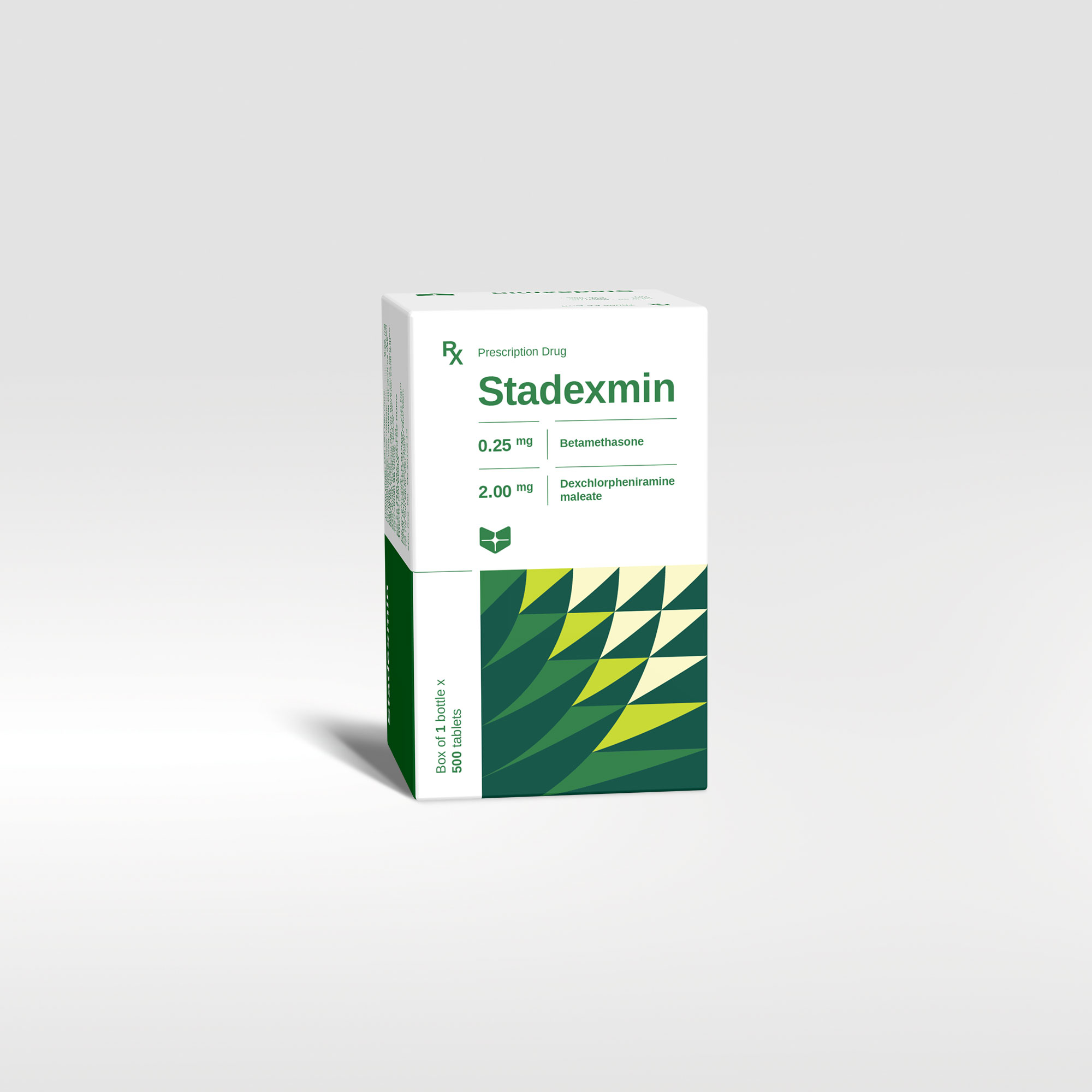Stadexmin Rx
Stadexmin is the combination of the anti-inflammatory and anti-allergic effects of the corticosteroid betamethasone, a synthetic derivative of prednisolone with the antihistaminic activity of dexchlorpheniramine maleate.
| Pack size | Box of 100 tablets. Bottle of 100 tablets, 200 tablets, 500 tablets |
| Shelf-life | 24 months |
| Composition | Betamethasone; Dexchlorpheniramine maleate |
| Dosage forms and strengths | Tablet: Betamethasone 0.25 mg; Dexchlorpheniramine maleate 2.0 mg |
Product code :













